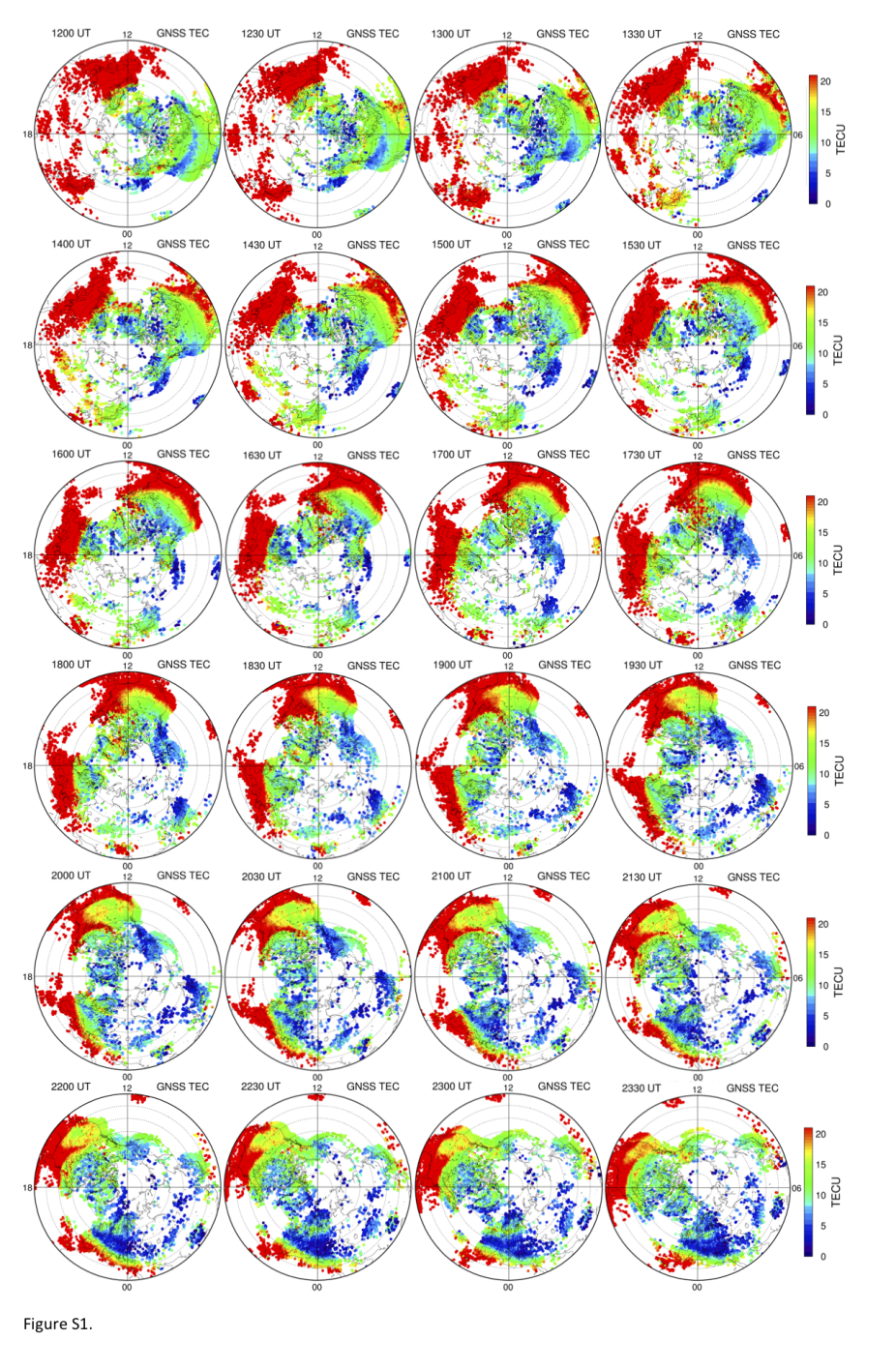Publication Name: JGR- Space Physics; First HAO Author's Name: Gang Lu
Storm-induced ionospheric density variations are a major concern of near-Earth space environment as they could drastically disrupt satellite navigation and telecommunication systems. Although ionospheric disturbances such as traveling ionospheric disturbances (TIDs) and storm enhanced density (SED) are commonly observed during geomagnetic storms, accurate specification of these phenomena remains a great challenge for geospace models.

Large-scale ionospheric disturbances during the 17 March 2015 storm: A model-data comparative study.
This paper presents a detailed model-data comparative study of the well-known March 2015 St Patrick’s Day storm. The simulated TIDs and SED structures from the Thermosphere-Ionosphere-Electrodynamic General Circulation Model (TIEGCM) are compared with the total electron content (TEC) observations for a dense GNSS network over Europe, South and Central America, as well as North America. While the model reproduces many observed storm-related ionospheric features, quantitative differences between the simulation results and the GNSS data indicate that further improvements to the TIEGCM (such as a more realistic, self-consistent electrodynamic coupling of the ionosphere and magnetosphere) are required in order to meet the challenges of space weather specification, and eventually forecast. This study not only serves a meaningful validation of our numerical model but also shed some new lights on an apparent paradox concerning the formation of the SED plume.